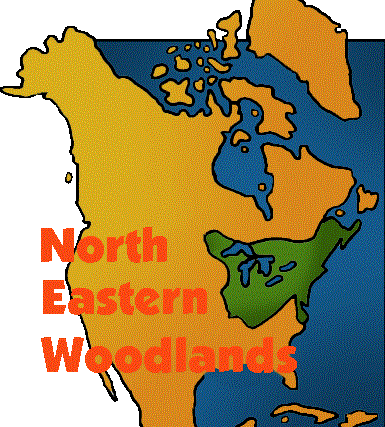
The Northeastern Woodlands of North America is a land of heavily forested rolling hills and rounded mountains, salt marshes of waving grass, calm lakes, tumbling brooks, surf-beaten beaches, and rocky coves. This culture area stretches west from the Atlantic coast to the Mississippi River, and from Virginia in the south to New Brunswick in the north. The era from earliest habitation to about 8000 BCE is called the Early Paleo-Indian Period by some archaeologists. A few of the archaeological findings for this period from the Northeast are briefly described below.
The ice sheets that once covered the northern part of the continent began their withdrawal from the Northeast about 15,000 BCE. Human habitation in the area began when the ice sheet still covered much of the area. David Anderson, writing in The Oxford Companion to Archaeology, reports: “Paleo-Indian groups near the ice sheets targeted large game, particularly caribou, while groups in the Woodlands to the south were more generalized foragers, exploiting a wide range of animals and plant species.”
The overall data seems to suggest that there was initial settlement along major rivers at sites where there was high quality stone for making tools. According to David Anderson: “These localities are thought to reflect areas of initial extended settlement, staging areas from which the colonization of the larger region proceeded.”
At present, the earliest evidence of human occupation in the Northeast comes from the Cactus Hill site on the east bank of the Nottoway River in southeastern Virginia. The site is about 13 miles east of the Fall Zone. Archaeologists Dennis Stanford and Bruce Bradley, in their somewhat controversial book Across Atlantic Ice: The Origins of America’s Clovis Culture, write: “Sometime between 20,100 and 22,600 years ago, people began to use the sand ridge as a temporary campsite.”
In southwestern Pennsylvania, people were using the Meadowcroft Rockshelter by 17,600 BCE, a time when the Laurentide ice sheet was only 50 miles away.
The earliest people in the Northeast appear to have been hunting and gathering people who were living in small, highly mobile bands. They often used fluted bifacial projectile points (most likely spear points) which had a rough resemblance to the famous Clovis points. Some archaeologists characterize the earliest inhabitants of the region as using “Clovis-like” points and associated stone tools. Writing in the Handbook of North American Indians, Robert Funk reports: “The fluted-point hunters probably entered the Northeast from the south and west following the glacial retreat.”
In Virginia, Indian people began to occupy the Cactus Hill site south of Richmond by 15,000 BCE. They were making blades from quartzite cores that had been collected elsewhere. The blades were made by striking the core with a soft stone hammer. They were making lanceolate, unfluted bifacial points that could be used as projectile points or as hafted knives. With regard to the implications of this tool kit, archaeologist J.M. Adovasio, in his book The First Americans: In Pursuit of Archaeology’s Greatest Mystery, writes: “these appear to have been the work of people who were foraging for a variety of faunal and floral food resources.”
In the western portion of the Northeastern region, Indian people were butchering mammoths at the Chesrow site in Wisconsin by 11,500 BCE. The stone tools used at this site were made from a poor quality stone which is not suited for fine flintknapping. At this time, the good stone in central Wisconsin was still buried under the ice sheets. With regard to the people at this site, archaeologist Alice Beck Kehoe writes in her book America Before the European Invasions: “They were intrepid pioneers indeed, cutting up wooly mammoths within a few days’ walk of ice fields stretching north beyond the horizon.” At about this same time, Indian people hunted and butchered a Jefferson’s Ground Sloth in Ohio.
By about 11,000 BCE, Indian people occupied a cave in what is now Ohio. They were using stone tools, including scrapers and gravers. The animals hunted by these people included the short-faced bear (Arctodus simus), a giant, long-legged omnivore; stagmoose (Cervalces scotti), an animal that resembled modern moose except for its forked antlers; giant beaver, (Castoroides ohioensis), an animal that reached up to nine feet in length; flat-headed peccary, (Platygonus compressus), the wide-ranging American pig of the Pleistocene; and caribou (Rangifer tarandus).
By 10,500 BCE Indian people called Early Hunters by archaeologists were settling in the tundra adjoining the southern edge of the Wisconsin ice sheet. As the ice withdrew, spruce woodlands appeared which were utilized by these people.
At about this same time, the Dutchess Quarry Cave in what is now New York was being used for making fluted points. The people at this site were hunting caribou.
About 10,000 BCE Indian people began to move into New England. Archaeologist Dena Dincauze, in her chapter in The Pequots in Southern New England: The Fall and Rise of an American Indian Nation, calls these people “Pioneers” and writes: “Clad in their caribou-skin clothing, carrying infants and household goods and thrusting spears with elegantly shaped points of colorful stone, these are the people who first gave names to the landscape, who explained its special areas and vistas in terms of their own cosmology, and who first explored and exploited its riches for human purposes.”
At about this same time, Indian people were now living in New Jersey. In his book Looking Beneath the Surface: The Story of Archaeology in New Jersey, archaeologist R. Alan Mounier writes: “Their signature artifact—the fluted point—is among the most recognizable of relics, owing to its graceful shape, its exquisite workmanship, and its celebrity, arising from its relative antiquity.”
About 9500 BCE Indian people established a hunting camp at the Conover Site in Virginia. They were using a variety of chert tools, including fluted projectile points, bifaces, and unifacial tools.
By 9300 BCE, Indian people began moving up the Champlain and Connecticut Valleys into the state of Vermont. Part of their economy was based on hunting caribou. They may have also exploited the marine resources of the Champlain Sea.
At about this same time in New Hampshire, Indian people occupied the Colebrook site. They were using a type of spear point which archaeologists call Michaud/Neponset.
By 9000 BCE, Indian people were occupying the Thunderbird site on the South Fork of the Shenandoah River in present-day Virginia. The occupants were making and using Clovis-type points. Thunderbird was a base camp and was associated with a nearby quarry. According to Ian Shaw and Robert Jameson in A Dictionary of Archaeology: “An important activity was the refurbishing of toolkits with new flaked stone tools manufactured from jasper collected from a nearby quarry.”
By 8900 BCE, Indian people occupied Sheriden Cave in present-day Ohio. In addition to stone tools (identified as Clovis-like), they were also using bone tools.
By 8800 BCE, Indian hunters using Clovis technology were hunting mastodons at the Hiscock site in present-day New York.
By 8600 BCE, the period which archaeologists call the Bull Brook phase in present-day Massachusetts, begins. With regard to material culture, the Indian people at this time were using fluted points.
About 8500 BCE, Indian people established a seasonal site at Vail in present-day Maine for killing caribou. The caribou were killed along a sandy patch of ground near the river and then the animals were processed for hide, meat, and marrow. The hunters maintained their camp across the river from the kill site.
With regard to their tool kit, hunters were using fluted points with deep, concave bases which are similar to those used by the people at the Debert site in Nova Scotia. While the nearest suitable source for stone for making tools is about 25 kilometers away, the hunters and food processors were using stone tools which come from more distant quarries in Vermont, New York, and Pennsylvania. The people living at the Vail site were using tents which measured about 4.5 by 6 meters (approximately 15 by 20 feet).
About 8300 BCE, a large group of Indian people established a seasonal camp near present-day Traverse City, Michigan. They were using stone tools which were made from stone from the Saginaw Bay area, 100 miles away.
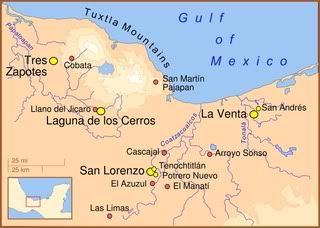
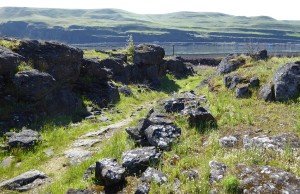
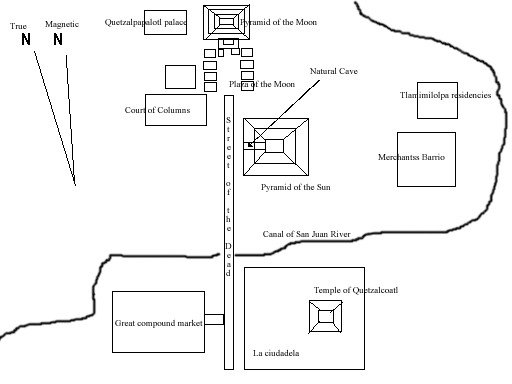
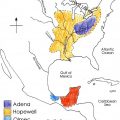
Leave a Reply